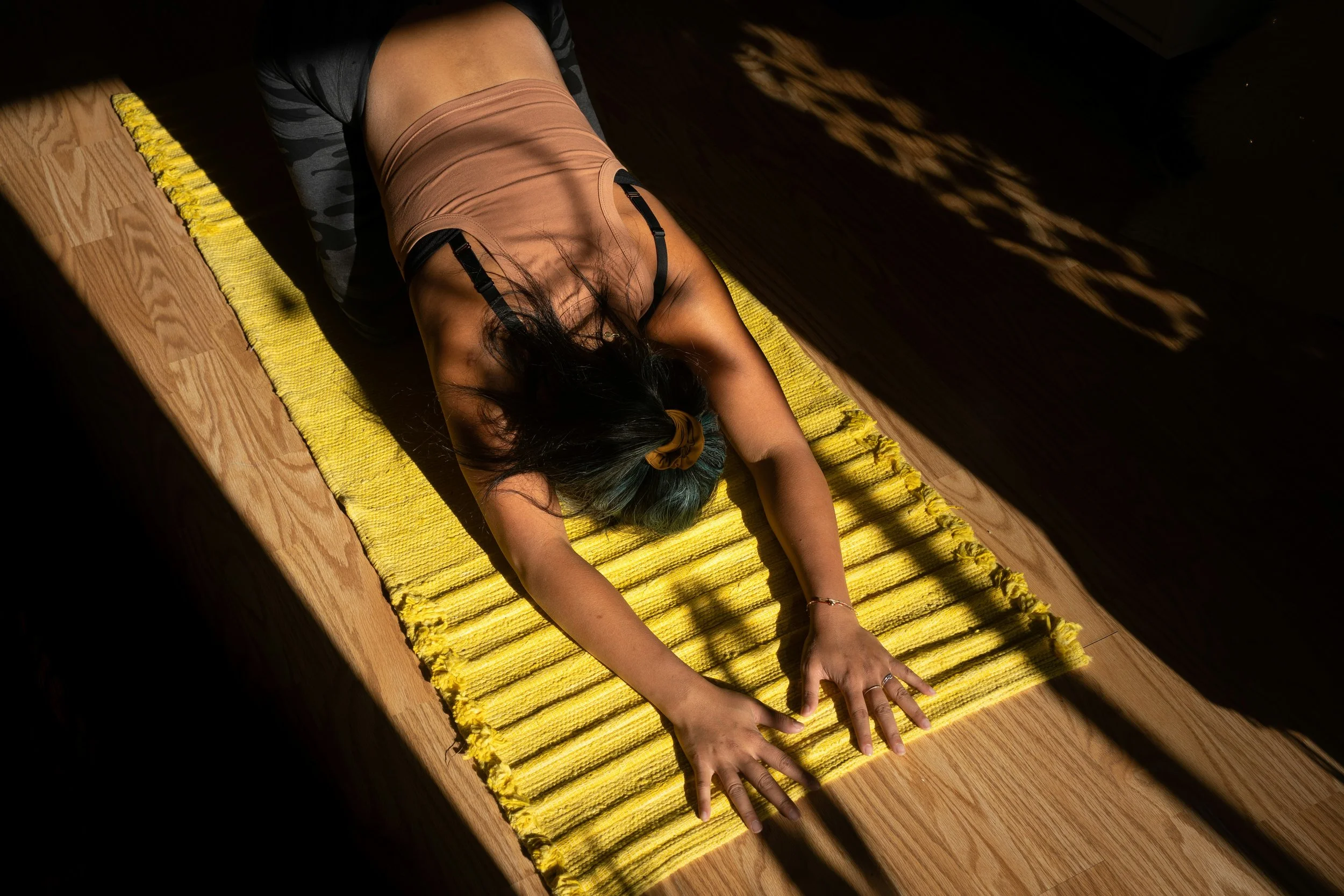Unlocking Meditation Through Yoga Flows
What I've come to appreciate most about practicing yoga is how it seamlessly incorporates meditation with movement. I really enjoy meditation as a standalone practice, but in terms of spicing things up and adding variety, adding yoga to the "toolbox" has been a no-brainer.
One of the things I've personally noticed after practicing yoga for a while is how much smoother meditation flows when practiced through yoga, both in terms of breath and its depth, as well as in terms of the perception of time. I still practice meditation frequently, but rather as a supplement to my yoga practice.
If you're new to yoga and meditation, primarily focusing on the meditation aspect of the practice, how do you choose the most suitable yoga form for you? Let's take a look at the overview below.
Yoga styles emphasizing meditation:
Raja Yoga: Often referred to as the "royal path" or "yoga of meditation". Raja yoga focuses on controlling the mind through concentration, meditation techniques, and ethical practices, based on the Yoga Sutras of Patanjali. It is highly meditative as it directly focuses on mental mastery and inner clarity, with minimal emphasis on physical poses. This makes Raja yoga ideal for those seeking profound self-inquiry and enlightenment.
Yin Yoga: A slow-paced yoga style involving holding poses for several minutes to target deep connective tissues, encouraging patience, deep breathing, and surrender. The meditative aspect of yin yoga stems from the extended stillness, which aids mindfulness, emotional release, and a quieting of the mind, often leading to a trance-like state of introspection.
Restorative Yoga: A gentle yoga practice supported by props (blocks, bolsters, blankets, etc), where poses are held for longer durations (often 5 to 20 minutes) to encourage complete relaxation and promote nervous system recovery. The goal of restorative yoga is to relax completely into each pose. It's deeply meditative due to its focus on letting go, deep rest, and sometimes incorporating yoga nidra (guided meditation), which helps reduce anxiety and cultivate inner peace without physical strain. Although all types of yoga can aid in stress relief and brain health, restorative yoga focuses on down-regulating the nervous system. Restorative yoga became my personal favorite yoga style when recovering from adrenal fatigue and rebuilding my nervous system.
Yoga Nidra: A guided meditation form, sometimes classified as a standalone yoga style or within the restorative yoga genre, that allows you to hover between a state of sleep and wake. It is profoundly meditative as it systematically relaxes both the body and mind, accessing subconscious layers for healing, stress relief, and heightened consciousness, often without requiring any physical movement. One hour of yoga nidra is believed to be equivalent to several hours of sleep. While it serves as a beneficial self-care tool, it cannot substitute for a healthy night's sleep. Yoga nidra and hypnosis share notable similarities, especially their ability to induce altered states of consciousness and promote deep relaxation for therapeutic purposes. However, they also differ in terms of philosophical origins, mechanisms, and ultimate objectives.
Kundalini Yoga: A spiritual yoga style combines dynamic poses, breathwork, chanting (mantras), and explicit meditation to awaken inner energy (kundalini). Its meditative emphasis stems from the integration of meditation sessions, kriyas (sequences), and chanting, which, when combined, enhance self-awareness, spiritual awakening, and emotional balance. Be aware that Kundalini yoga can be challenging due to its strong emphasis on internal energy and spiritual awakening.
These yoga forms are particularly suited for beginners, except for Kundalini yoga, which might be more suitable for intermediates in yoga.
The Science Behind Yoga's Meditation Boost:
Scientific research increasingly supports the idea that yoga can enhance the benefits of meditation, often by preparing the body and mind for deeper, more sustained meditative states through improved focus, stress reduction, and neurobiological changes.
Research indicates that combining yoga with meditation results in greater improvements in mental health outcomes than practicing each method individually, including reduced symptoms of anxiety and depression.
Yoga's physical postures and breathwork regulate the nervous system, facilitating mental clarity and emotional balance, which are essential for effective meditation.
Research from a neuroscience perspective suggests that meditation enhances gray matter in regions associated with attention, self-awareness, and emotional regulation, including the prefrontal cortex and hippocampus. This enhancement allows for improved sustained focus during meditation.
Functional MRI studies indicate that combining yoga and meditation affects neurotransmitters such as GABA and serotonin, which helps reduce psychological distress and promotes calmness, making meditation more accessible and effective.
Long-term practitioners exhibit improved brain connectivity, which enhances their resilience against stress and facilitates entry into trance-like meditative states.
References:
https://www.calm.com/blog/types-of-yoga
https://yogamedicine.com/guide-types-yoga-styles/
https://pmc.ncbi.nlm.nih.gov/articles/PMC4769029/
https://www.sciencedaily.com/releases/2017/08/170822104855.htm
https://pmc.ncbi.nlm.nih.gov/articles/PMC10492419/
https://pmc.ncbi.nlm.nih.gov/articles/PMC3193654/
https://www.health.harvard.edu/staying-healthy/yoga-for-better-mental-health
https://www.mdpi.com/2227-9059/12/11/2613
https://www.uclahealth.org/news/article/new-understanding-power-yoga


